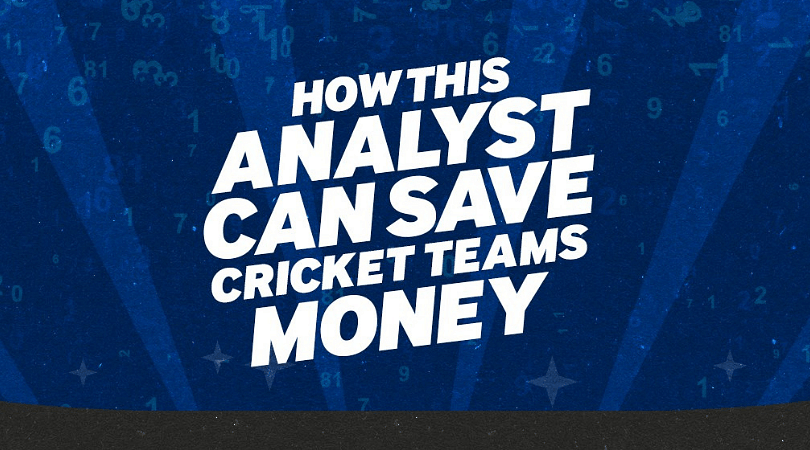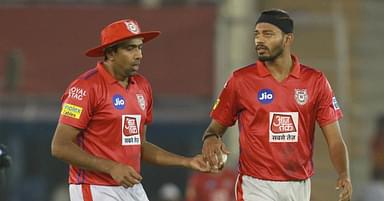This gambler-turned-analyst can save cricket teams money: In a recent interview, Dan Weston disclosed a whole new approach to T20 recruitment.
Advertisement
Data analyst Dan Weston describes taking on cricket’s ‘old school’ with his numbers-based approach, and reveals the biggest mistakes that T20 teams make.
Cricket has long been accused of conformism.
And while the T20 format has pushed its limits – music, dancers and fireworks just would not have been cricket 20 years ago – data analyst Dan Weston is breaking new boundaries on the pitch.
Weston uses his data – collected from millions of balls’ worth of cricket – to calculate and predict the success of cricketers in all formats around the world, including India, where the Chennai Super Kings are among the favourites to retain their title in the latest IPL betting on Betway.
But by reducing a player to number, he turns off traditionalists, who prefer to rely on feel, instinct and outdated conventional wisdom when making selections.
“Quite a few coaches are old school, so it’s difficult to get them to buy into what you’re offering,” says Weston, who became an expert analyst after a period of full-time gambling resulted in him producing extensive tennis data.
“There are just not enough fresh voices.
“Cricket is full of inane data like: ‘This is the slowest century by an English batsman on a Tuesday.’ It’s completely worthless.”
Weston set out to put that right after learning his tennis analysis was transferable to cricket.
He realized the errors that were being made in the sport – “you name it, they’ll make that mistake, be it selection, recruitment, in-game tactics” – so set up a business that supplies data to teams, players and agents that aims to eliminate them.
Weston’s model is a complex one. He takes a players’ individual data (average, strike rate, economy), which requires recording data ball-by-ball, and makes adjustments to it based on recency, opposition quality, and the conditions in which each tournament is played in.
Based on that, he produces expected stats for that player for an upcoming event. In effect, this is a reliable prediction for how they will perform in a tournament, which allows him to recommend players to teams around the world, including for the IPL and T20 Blast.
“Cricket is a conditions-driven sport,” he says, “so a T20 Blast match at Canterbury will be a pace-orientated affair, whereas in Dhaka it’s going to be spinner-friendly and low-scoring.
“If a batsman performs well at Canterbury, does that really apply to a match in Dhaka? Probably not. There’s limited relevance. So I analyse how historically similar players have made the transition from one league to another.
“I might be asked to find a pace bowler for the T20 Blast, where an Australian will be quite highly-rated, as opposed to the IPL, where they haven’t thrived as much as their reputation would suggest because of the quality of the league.”
‘Reputation’ is a word Weston repeats several times, and believes is at the heart of several misjudgements in recruitment.

T20 is still a relatively new format in the context of cricket’s history, so that there is no magic formula is hardly a surprise. But Weston insists that only “laziness” prevents teams from making bigger strides.
“If a bloke like myself can sit in an office and produce decent theories and data about T20 I see no reason why a team with bigger resources can’t do the same,” he says.
“Lots of high-profile players are signed based on reputation rather than current ability. Take Brendon McCullum: he’s got a poor record against spin bowling, he doesn’t keep wicket anymore, yet subcontinental teams are signing him as a marquee player. It makes no sense whatsoever.
“Then you see players signed based on reputation from another format.
“So Sam Curran played very well against India in Test matches last summer and has subsequently got a mega IPL deal despite the fact that his T20 data is not particularly impressive. I will continue to argue that he is an anti-moneyball signing.”
Curran is one of several multi-dimensional cricketers breaking through at the top of the world game, with their all-round attributes valuable to T20 teams aiming to fit as many batting and bowling options into their team as possible.
But while versatile players are important, the unbalance caused by cramming them into the team can negate their affect. Weston is sure that the art of the specialist cannot go forgotten in T20, particularly with the ball, and has the numbers to prove it.
“You don’t want to stick an all-rounder at No. 9 because he’s just not going to bat,” he says.
“The average No. 8 faces about seven balls per match, and the average No. 9 faces about four balls per match. If those guys are required to face more than the average, your top order batsmen haven’t done their job properly.
“For No. 9, 10 and 11 you just want an out-and-out specialist bowler who would perhaps then be capable of playing a five-ball cameo.
“If you pick too many all-rounders you end up compromising where they bowl, because often they turn out not to be very good death bowlers.”
When you consider the money that could be saved by teams actioning that advice, it seems peculiar that Weston is soliciting work rather than turning it down.
Not that his ideas are being ignored.
He reveals how he learned from contacts in the industry recently that teams from around the world were using the content he produced on his website without using his services as a consultant, forcing him to limit his public output to reactive analysis only as a result.
“I wrote an analysis of 10 English players who would perform well in the subcontinent and the top five all got signed,” he says.
“That includes guys like Wayne Madsen, who had never had an overseas contract before.
“A lot of the time people say they don’t have the financial capabilities to pay for my work, but I don’t buy into that theory at all. You can’t tell me that a cricket team has no financial wastage.
“If they were to use my data, they would be able to release a player and free up the money to pay for a consultant. It’s an indictment of the game at the moment.”
Weston does believe that the industry is beginning change, though, as younger coaches come into the sport and the education of current ones evolves.
“I think things will change in the next decade or so,” he says. “We’ll find that cricket will turn to much more of a baseball-orientated, stats-driven sport.”
If and when it does, it will be justification for his efforts.



